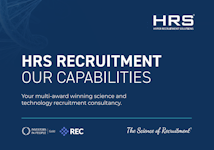
If you happen to work in HR, diversity in the workplace is probably a very familiar topic. It’s a legal obligation that’s seen growing visibility over the last two decades.
However, diversity isn’t just a matter for Human Resources. Diversity in the workplace has a profound influence on every part of the working process, from social interaction to quality of work.
A diverse workforce can provide better results in terms of creativity, problem-solving and decision-making, generally resulting in a more productive environment all round. After all, a toolbox full of hammers won’t do much good when it comes to changing a light bulb.
Diversity Hiring Laws
The Equality Act 2010 protects people from discrimination in the workplace, theoretically providing a basis that ensures nobody’s personal background or characteristics affect their right to work.
However, according to the Chartered Institute of Personnel and Development (CIPD), “an effective diversity and inclusion strategy goes beyond legal compliance”, and appropriate steps must be taken to ensure a varied working environment.
As such, knowing how to hire more diverse employees while staying safely within the boundaries of diversity hiring laws is a must for any company. Failure to do so could land your business in hot water.
Luckily, we’ve got a few helpful suggestions that will allow you to broaden your field of applicants instantly, helping you achieve a multicultural, multi-talented workforce across the age spectrum.
How to Hire More Diverse Employees
While specifically targeting a particular group can lead to accusations of discrimination, ensuring that your recruitment strategy is free from any involuntary prejudice can be a fantastic way to fairly and efficiently level the playing field for everyone.
Here are three effective diversity recruiting strategies that will help you to achieve a balanced response from all manner of candidates, ensuring your field of applicants is as diverse as possible.
Requested Info
Whether you consciously realise it or not, the information you collect via job application forms can have a dramatic effect on your perception of each applicant.
Information such as gender and nationality can subconsciously affect your expectations of a candidate and influence your response accordingly. Even names can trigger such biases; anonymous job applications have gained a lot of of traction in recent years as a means of eradicating this issue.
While this may seem a little extreme, there are simple steps that can be taken that garner similar results. To nip this issue in the bud, simply avoid asking for information such as gender, date of birth and nationality within your application forms.
That way, you can completely avoid direct or indirect discrimination by simply not knowing these characteristics, basing your judgement exclusively on the merit of the candidates in question.
Tell-Tale Wording
It’s also important to note that the inclusion of certain words in a candidate specification can also give skewed results. As such, it’s important to take care when penning your job descriptions to avoid a slanted verbiage.
For example, requesting “recent graduates” is likely to return applicants in their early to mid-20s, while requesting “experienced candidates” or requiring a minimum of X years’ experience is likely to discourage applicants below a certain age.
While there are always exceptions to these rules, avoiding such potholes could help you to appeal to a wider mix of applicants.
Favoured Parties
Though potentially more controversial than the above steps, favouring one party over another in order to achieve a greater balance in the workplace is undoubtedly an effective way to combat the issue of discrimination.
However, this tactic can spark debate, and may be perceived by some as discriminatory in itself.
This approach has drawn criticism from some corners over the years as it does - somewhat ironically - exclude certain parties in order to give more opportunities to a specific group. Nevertheless, it is a legal technique and one that is promoted by the government itself.
According to gov.uk, as an employer, you are allowed to favour a candidate with “protected characteristics” over one without if you feel the former is underrepresented in your workplace / industry. The only proviso is that both candidates must be equally matched in terms of suitability for the role.
Challenges of Diversity in the Workplace
While it’s important to have a fair and unbiased recruitment process, recruiting a candidate for the specific purpose of “ticking a box” can be counterproductive for all parties and can foster workplace resentment, as well as potentially reducing the overall quality of the work produced.
For example, hiring an ineffective communicator for a role that predominantly involves communication will likely result in a negative outcome for the company, the customer and the team, which can in turn be demoralising for the worker themselves.
Being fair without inadvertently discriminating against any party is a key part of creating an equal process. If you base your search purely on merit, you should bag yourself a diverse workplace by proxy, and this will ultimately achieve the best results for your business.
Read More: Inappropriate Interview Questions >>
Photograph courtesy of Pexels
